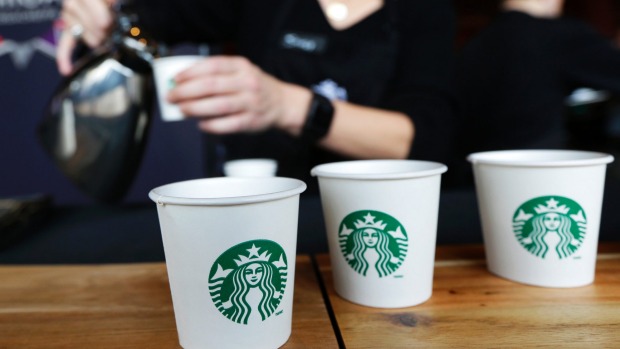Can Starbucks win over espresso-crazed Italians?
The global coffee behemoth Starbucks has 24,000 locations worldwide in 70 countries. Customers can buy grande frappuccinos from Brunei to Brazil to Dubai, as well as in nearly two dozen European countries. But one locale has long been missing from its massive footprint: Italy, the home of the espresso bar.
That will change in 2017 when Starbucks opens its first location in Milan, followed by others across Italy, a move it announced late Sunday.
Expansions into new countries by global corporations are rarely headline news, but for Starbucks, this occasion is different. For one, the company will sell its coffee in a place perhaps more associated with coffee aficionados than anywhere in the world – representing not only a big opportunity to try to prove itself but also a big risk.
“If the country that practically invented cafe culture rejected Starbucks, that would be an enormous black eye,” said Laura Ries, a brand consultant based in Atlanta.
In addition, the move gives the company the chance to reinforce the narrative it has long told about Starbucks’s brand: that it was hatched in Italy by chief executive Howard Schultz more than 30 years ago. While that’s a good opportunity for any company, it’s particularly critical for Starbucks, which has long used the story to turn a cheap commodity into a higher-end customer “experience” for which people are willing to shell out extra.
“What Howard figured out a long time ago is that the ‘what’ story doesn’t matter,” said David Srere, the co-chief executive of the brand strategy firm Siegel+Gale. “It’s the ‘so what’ story that matters.”
The company emphasised both of those points in its announcement. The headline of its news release said the company was entering Italy “with humility and respect” for the country. Schultz said he plans to develop a coffee blend specifically for the Italian market and add a bar for customers to stand at, as is custom in Italian coffeehouses.
The company will also be going local with a partner, working with Percassi – which Srere noted is “hugely respected in Italy” – as the licensee to operate its stores.
Branding experts said the humble and local approach was the right one.
“You’ve got to go and kiss the ring here – you don’t mess around with Italy and coffee,” Ries said. Companies need “to be authentic, and to not just be the big American brand with guns blazing, coming in to take over the town.”
The company used the news to share a lengthy history of Italy’s influence on Starbucks’s origins, complete with photos of Schultz standing in front of the Duomo, Milan’s cathedral, today and a grainy image of a much younger, dark-haired Schultz in Italy in 1983.
The story is one of the more famous origin tales in Corporate America. In the early 1980s, Schultz was running sales for a high-end Swedish housewares company and noticed that a small coffee chain in the Pacific Northwest was buying a lot of its drip coffee makers. He visited the Starbucks Coffee, Tea and Spice Company, was taken with the coffee’s quality – back then it was sold only as whole beans – and persuaded the small operation to let him join as its marketing director.
In that role, he went to Italy for a trade show, so goes the corporate lore, and fell in love with Italy’s cafe culture. He devotes nearly a whole chapter to it in his first book, “Pour Your Heart into It,” in which he gushes with an almost religious fervour about the “strong sensual flavour” of the espresso he drank there and the “great theatre” of the country’s coffeehouses.
“I felt the unexpressed demand for romance and community,” he wrote. “The Italians had turned the drinking of coffee into a symphony, and it felt right. Starbucks was playing in the same hall, but we were playing without a string section.”
Back home, he tried to persuade his partners at Starbucks to start an espresso bar. They let him launch a trial in a new location, but they considered it a distraction. In time, he went back to Italy. This time when he returned, he left Starbucks and started a coffee business in Seattle he called Il Giornale, after a Milan newspaper. His former partners invested in that start-up – but Schultz ultimately ended up acquiring Starbucks from them, and he built the company we know today.
While it may sound like little more than corporate folklore, Srere says re-upping the story is also smart marketing, particularly for an American company that’s taking the risk of trying to sell espresso to Italians.
“He’s basically telling a narrative that Starbucks is coming home again,” Srere said. “When you expand into a place where you’ve never been before, it’s like one strike and you’re out.”
Article Written By: Jena McGregor
0

